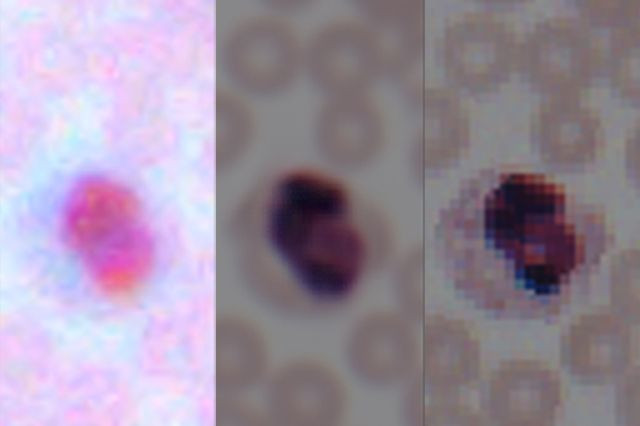AI Brings Lab-Grade Microscopic Details Into Smartphone Images

Deep learning, a powerful form of artificial intelligence (AI), has wide spanning uses in a number of fields. Many people worry the technology could prove devastating for humanity, but recently, a group of researchers has shown how it could drastically benefit people, particularly those living in underdeveloped parts of the world.
The team, coming from UCLA Samueli School of Engineering, Los Angeles, leveraged deep learning to take standard smartphone camera capabilities up to the level of a lab-grade microscope. This means the images will be taken from a phone, but their quality will be as detailed and precise as from a high-tech laboratory microscope.
This could ultimately be used to conduct inexpensive lab-grade analysis in poor parts of the world, where technologies for high-quality diagnostics are unavailable.
In order to develop this tech, the group created a tiny attachment, one that could be integrated with the lens of a smartphone camera and produce high-res microscopic images with ultra-fine details, down to a scale of approximately one-millionth of a meter.
The device can be 3D printed at cost of some $100, but that solves just the resolution part of things. In order to achieve lab-grade precision truly, the team had to bring artificial intelligence into action.
For this, they took images of lung tissue samples, blood and Pap smears from both high-tech lab microscopes and smartphones with the attachment integrated. The output from both devices was fed into a deep-learning based computer system which learned to discern and enhance microscopic details in the photographs. The working of the whole thing was tested with not just smartphone shots but also with compressed low-quality images.
"Using deep learning, we set out to bridge the gap in image quality between inexpensive mobile phone-based microscopes and gold-standard bench-top microscopes that use high-end lenses," Aydogan Ozcan, lead author of the study, said in a statement. "We believe that our approach is broadly applicable to other low-cost microscopy systems that use, for example, inexpensive lenses or cameras, and could facilitate the replacement of high-end bench-top microscopes with cost-effective, mobile alternatives."
This adds to the growing list of AI uses. From self-driving vehicles to predicting which patients are more likely to die in coming months, the technology has been revolutionizing automotive and medicine sectors. This specific tech is just an upgrade for smartphone cameras, but in parts of the world that are deprived of high-tech diagnostic technologies, it could be an inexpensive and easily available solution. However, as of now, there is no word on when something like this would be available for widespread use.
The work on the technology has been detailed in a paper titled "Deep Learning Enhanced Mobile-Phone Microscopy" and published in ACS Photonics, a journal of the American Chemical Society.
© Copyright IBTimes 2024. All rights reserved.





















